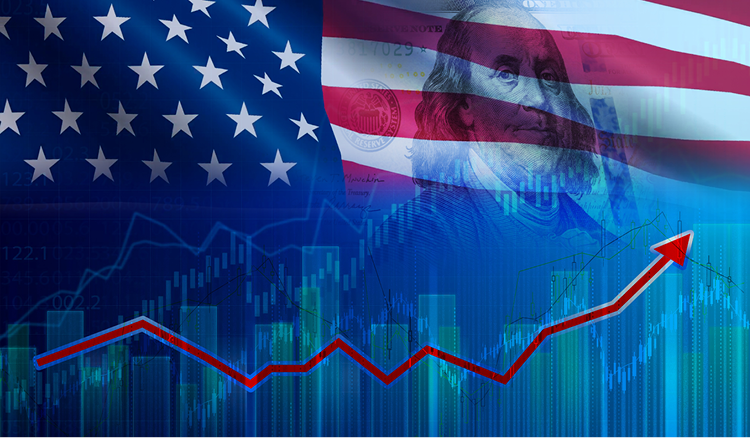Trump 2.0 Week 29 In Review: Discussing The Impending Tariffs on Semiconductors and Pharmaceuticals, Escalating Tensions With India, and More
The global trade landscape continues to evolve at a rapid pace, disrupting established international relationships and forcing supply chains to adapt to new realities. This week’s major developments—escalating tensions with India to sweeping duties on semiconductors and pharmaceuticals—reflect a decisive push to rebuild domestic manufacturing and secure critical industries. For manufacturers and distributors who prioritize agility and can pivot quickly, these shifts represent valuable opportunities to thrive and lead within an increasingly complex trade environment.
This week’s highlights:
- Trump doubles tariffs on Indian imports from 25% to 50% over Russian oil purchases
- Potential new tariffs on China tied to continued Russian oil imports
- 100% tariff announced on imported semiconductors unless companies commit to U.S. manufacturing
- Steep tariffs proposed on imported pharmaceuticals, escalating to 250% over time
- Deadline looms for Russia to end Ukraine war amid threat of 100% secondary tariffs on Russian oil buyers
- Commerce Secretary Lutnick Signals Likely 90-Day Extension of U.S.-China Tariff Truce
Plus: Why operational agility is the key to success in this environment, and how Veryable helps manufacturers and distributors build it into every part of their operation.
Trump Escalates Tensions With India Over Russian Oil Imports
After five rounds of trade negotiations, India had expected a favorable U.S. deal with tariffs capped at 15%. Instead, no agreement materialized, and trade tensions escalated sharply. On Monday, President Trump announced he was doubling tariffs on Indian imports from 25% to 50%, citing India’s continued purchases of Russian oil. Trump also ruled out any further trade talks with India until the tariff issue is resolved, stating “No, not until we get it resolved”.
The new 25% levy will take effect on August 27th and stack on top of the 25% tariff that took effect Wednesday, making India one of the countries facing the highest U.S. tariffs globally—comparable to Brazil (50%), Syria (41%), Myanmar (40%), and Switzerland (39%).
India responded Wednesday, calling the move “unjustified and unreasonable,” noting that U.S. and EU trade with Russia continues and emphasizing that their oil purchases were prompted by global energy shifts following the conflict. India has also paused major plans to procure U.S. weapons and aircraft—including Stryker combat vehicles, Javelin anti-tank missiles, and six Boeing P8I reconnaissance planes—marking a clear sign of strain in bilateral relations. Defence Minister Rajnath Singh’s planned trip to Washington to announce these purchases was canceled, though officials say the deals could resume once there is clarity on tariffs and the future of U.S.-India ties. While India denies halting procurement, the pause reflects rising uncertainty amid the tariff dispute. Despite these tensions, broader defense cooperation such as intelligence sharing and joint military exercises continues uninterrupted.
Trump also signaled that China could be a target for new tariffs, citing its continued purchases of Russian oil. While no formal action has been taken, Trump stated the move “could happen” and hinted that China may face secondary sanctions or additional duties similar to those imposed on India.
Despite these heightened tensions, this tariff escalation presents opportunities for U.S. manufacturing. Higher duties incentivize reshoring and domestic sourcing, especially for commonly imported goods like glass, metals, chemicals, machinery, and farm products. Companies with operational agility—able to pivot quickly in sourcing, production, and logistics—will be best positioned to capitalize on these shifts.
Trump Announces 100% Tariff on Imported Semiconductors
President Trump announced Wednesday that the United States will impose a 100% tariff on imported semiconductors and chips—unless the companies producing them are “building in the United States” or have made an unequivocal commitment to do so. The move, part of a broader Section 232 national security investigation into semiconductor supply chains, aims to force high-tech manufacturing back onto U.S. soil and reduce reliance on foreign sources, particularly in Asia.
Trump made the announcement during a press event in the Oval Office alongside Apple CEO Tim Cook, who was there to unveil Apple’s additional $100 billion investment in U.S. research and manufacturing, which builds off the $500B investment that was announced earlier in the year.
“The good news for companies like Apple is, if you’re building in the United States, or have committed to build—without question—committed to build in the United States, there will be no charge,” Trump said. He warned that companies trying to avoid the tariff without following through on domestic investment would face retroactive penalties, but hasn’t outlined any specifics.
Taiwan Semiconductor Manufacturing Company (TSMC), Nvidia, and GlobalFoundries—all of which have announced or expanded U.S. manufacturing projects—are expected to be exempt from the tariff. TSMC already has one chip fabrication plant operating in Arizona, with two more under construction. Nvidia recently announced plans to invest $500 billion in U.S.-based AI infrastructure, while GlobalFoundries has pledged $16 billion in domestic expansion. Apple’s massive new investment further signals that the tech industry is adapting to align with the administration’s manufacturing push.
Despite the steep 100% tariff rate, the targeted nature of the policy has so far been welcomed by investors. TSMC, Nvidia, AMD, and Broadcom all saw premarket gains, with TSMC shares rising nearly 5% on the news.
Still, uncertainty remains—Trump did not specify whether the tariffs would apply only to standalone semiconductors or to those embedded in finished electronics, a distinction that could have major implications for consumer goods prices.
Trump’s Pharmaceutical Tariff Push Aims to Rebuild Domestic Manufacturing
In addition to his semiconductor tariff proposal, President Trump announced on Tuesday a plan to impose steep tariffs on imported medicines. In an interview with CNBC’s Squawk Box on August 5, Trump said he intends to begin with a “small tariff” on pharmaceutical imports, escalating over time to 150% within 18 months, and eventually reaching a maximum rate of 250%. This would be the highest pharmaceutical tariff rate proposed to date.
“We want pharmaceuticals made in our country,” Trump said, reiterating that the tariff strategy is designed to reverse decades of offshoring and reinvigorate U.S. drug manufacturing. The effort follows a Section 232 national security investigation into the risks posed by dependence on foreign pharmaceutical supply chains. Although that probe is still ongoing, Trump also signed an executive order in May to accelerate approvals for U.S.-based pharmaceutical manufacturing facilities.
Trump also reaffirmed his support for a “most favored nation” pricing policy, which aims to bring U.S. drug prices in line with those in other developed countries. Though still pending formal implementation, the policy could drive significant cost savings for consumers while reinforcing the economic case for building in America.
Already, this has already prompted a wave of investment announcements. Johnson & Johnson has committed over $55 billion to U.S. operations through 2029, citing the business climate created under Trump’s first term. Novartis pledged $23 billion to expand 10 U.S. sites, projected to create 5,000 jobs. Merck and Bristol Myers Squibb have also disclosed plans to invest $1 billion and $40 billion, respectively, in U.S. manufacturing and R&D.
While some industry groups have voiced concerns about potential short-term effects on pricing and international R&D partnerships, many see the new tariffs as a powerful catalyst for revitalizing America’s pharmaceutical sector. By encouraging companies to invest in domestic facilities, the policy is expected to reduce dependency on foreign production, improve access to critical medicines, create thousands of high-quality jobs, and help build a more resilient domestic supply chain.
Trump’s Deadline for Russia to End Ukraine War Nears Amid Threat of Secondary Tariffs
President Trump’s deadline for Russia to cease its war in Ukraine expires Friday, with the U.S. ready to impose steep “secondary tariffs” of about 100% on countries continuing to import Russian oil if no ceasefire is reached. Despite last-minute diplomacy, including a U.S. envoy’s meeting with Putin, no agreement has been secured. Key sticking points include Russia’s demands that Ukraine abandon NATO ambitions and allow Moscow to keep annexed territories.
These secondary tariffs would target Russia’s remaining oil buyers outside the G7, such as India, which faces a new 25% tariff starting August 27. This strategy pressures Russia indirectly by punishing its trade partners but risks straining relations with important allies. Russia’s economy, heavily dependent on oil exports, faces increasing isolation and slowed growth.
Commerce Secretary Lutnick Signals Likely 90-Day Extension of U.S.-China Tariff Truce
This week, on Thursday during an interview on Fox News, U.S. Commerce Secretary Howard Lutnick provided a clear indication that a 90-day extension of the current U.S.-China tariff truce is likely. His comments represented the most definitive signal from the U.S. side since the latest round of bilateral trade talks took place last week in Stockholm. While the White House has not yet officially confirmed the extension, officials in Beijing have publicly stated that an agreement was reached, reflecting a mutual understanding between the two countries to maintain the pause on escalating tariffs. This development underscores ongoing diplomatic efforts to manage and ease trade tensions as the original deadline for the truce approaches next week, highlighting both sides’ interest in preserving stability while continuing negotiations.
Why Agility Is Mission-Critical for Thriving in Uncertain Times
In today’s environment—where conditions can shift daily, sometimes even hourly—the companies that thrive won’t always be those with the biggest resources or deepest pockets. Instead, success goes to those who can adapt the fastest. With shifting trade policies, fluctuating tariffs, and ongoing supply chain disruptions, manufacturers and distributors must be ready to pivot quickly or risk falling behind. Veryable offers a powerful solution by fundamentally transforming how businesses manage labor.
Our on-demand labor platform empowers you to build a flexible, just-in-time workforce that scales seamlessly with your real-time needs. Unlike traditional staffing models that require long lead times, fixed headcounts, and lengthy hiring processes, Veryable lets you ramp labor up or down daily. This means you can respond instantly to changes in production volume, supply chain delays, or unexpected market shifts—without the delays, added costs, or burnout linked to overtime and fixed payrolls.
For example, with the additional 25% tariff on Indian imports taking effect August 27th, some companies may rush to pull through shipments before the deadline to lock in lower costs. This of course will create extra labor needs for unloading and processing those goods. With a labor pool, you could scale up precisely when needed to tackle this extra volume—and scale back just as quickly. This helps you manage these spikes efficiently without putting off other priorities or overworking your core team.
The bottom line? In a world where market conditions and trade policies can change overnight, the ability to pivot quickly isn’t just a convenience—it’s a vital competitive advantage. Veryable equips your business with the operational resilience to thrive amid today’s uncertainty, turning potential challenges into opportunities for sustained growth.
Ready To Get Started?
Talk to an Expert Create Free Business Profile How To Get Started
Additional Information
U.S. Manufacturing Today Podcast
For more information and insights, make sure to check out our U.S. Manufacturing Today Podcast. Hosted by Veryable’s Head of Reindustrialization & Growth Innovation, Matt Horine, this podcast is your go-to source for clear, actionable insights in a time of sweeping policy change. In each episode, we cut through the noise of sensational headlines and conflicting narratives to deliver grounded analysis on what these once-in-a-generation shifts mean for your business. You’ll also hear firsthand from operations professionals, business leaders, and industry experts as they share how they’re adapting to today’s evolving economic landscape—so you can do the same with confidence and clarity.
Available on:, Spotify, Apple, YouTube, and PocketCasts.
Navigating Trump 2.0
For additional insights into the developments under Trump 2.0, visit our “Navigating Trump 2.0” page. There you'll find comprehensive information on recent and potential future changes, along with a collection of articles offering guidance for manufacturers and distributors on how to succeed in this rapidly evolving environment.
Veryable Vendor Network
The Veryable Vendor Network (VVN) is a growing ecosystem of manufacturing, warehousing, and logistics businesses using on-demand labor to stay fast, flexible, and deliver consistent world class service —no matter the demand. Whether you’re looking to shorten lead times, strengthen your supply chain, or find reliable domestic partners, the VVN connects you with suppliers operating at peak efficiency.
Looking for qualified suppliers?
Submit a form, and we’ll match you with the right partners.
Previous Posts
How On Demand Labor Helps Manufacturers Maintain World Class Quality When Demand Refuses to Sit Still
The Future of Manufacturing and Logistics
Create a free business profile today to explore our platform.





